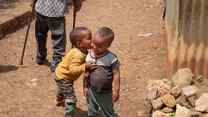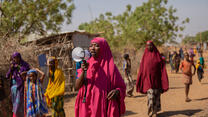As the World Bank develops a new Fragility, Conflict and Violence (FCV) Strategy, and approaches its 19th replenishment of IDA (IDA19, covering 2021-2024), this note explores the lessons learned since 2016 and asks what is working, what isn’t, and what else should the World Bank be considering?
The World Bank’s increasing engagement in fragile and conflict-affected settings can play a significant role in crisis prevention, preparedness and response, and in tackling the underlying conditions that drive today’s crises. It has unique value-add as a complement to traditional humanitarian and other development actors. The central question now is how the World Bank can best position itself to capitalize on this value-add in fragile and conflict-affected environments.
This note outlines the critical importance of World Bank investments in fragile states and crisis-related funding through IDA, offers a constructive critique and stock-taking of the Bank’s latest efforts, and provides recommendations for the Bank and its shareholders to consider moving forward. It draws on experiences and observations by the IRC, Mercy Corps and the Center for Global Development of the World Bank’s efforts, as well as experiences of implementing programs in crises where the World Bank’s tools are being deployed.
In a short period of time, the World Bank has laid a good foundation on which it can continue to build. Its concept note for the forthcoming FCV Strategy acknowledges many of the opportunities and challenges around maximizing its impact in fragile and crisis contexts. Both the FCV Strategy and the IDA19 framework should seek to provide concrete guidance for delivering on the following five recommendations:
- Refine comparative advantage—and avoid reinventing the wheel
- Refine diagnostic tools
- Broader the partnership model
- Utilize and strengthen existing coordination mechanisms
- Consult beneficiaries



